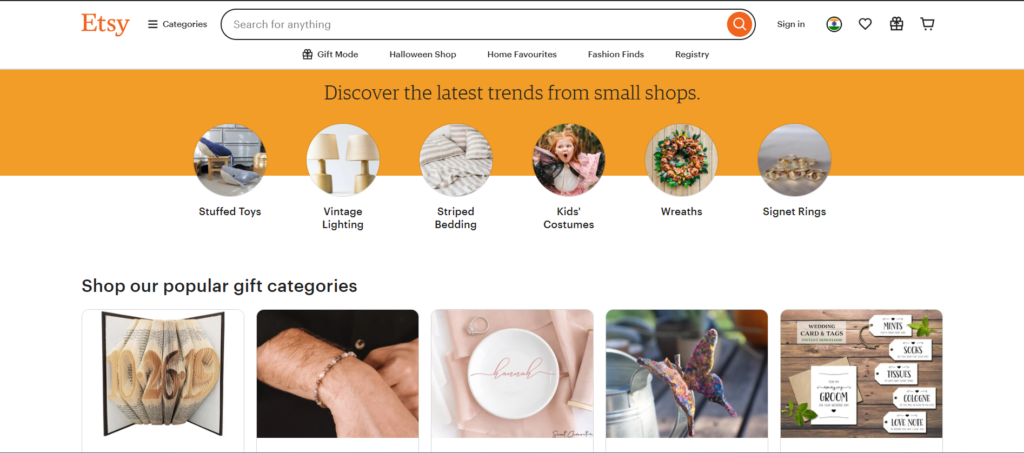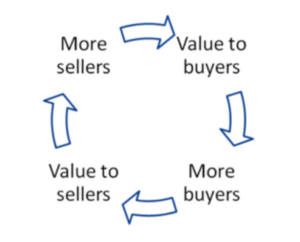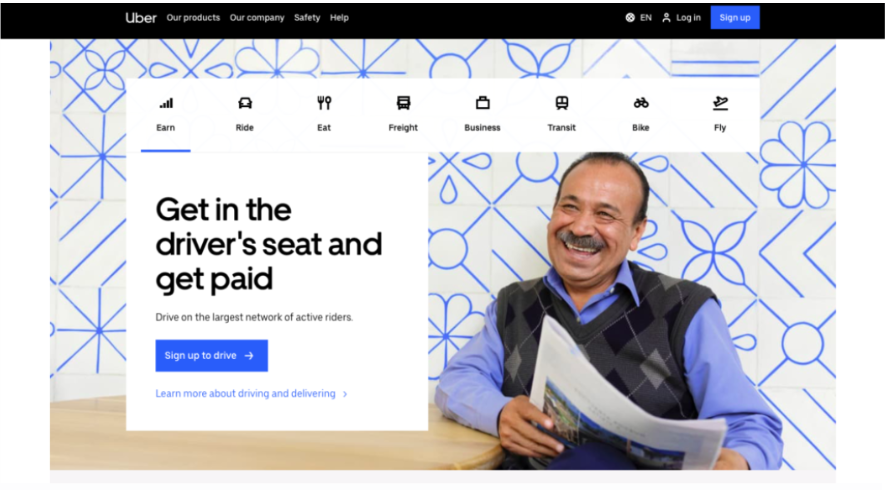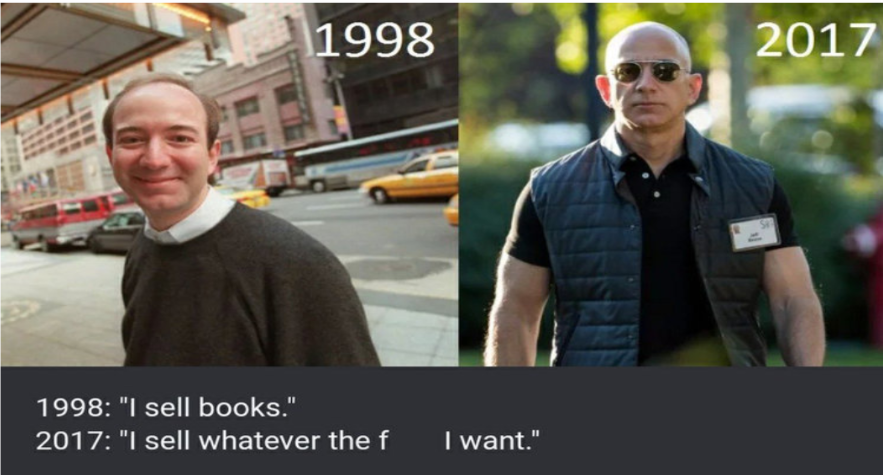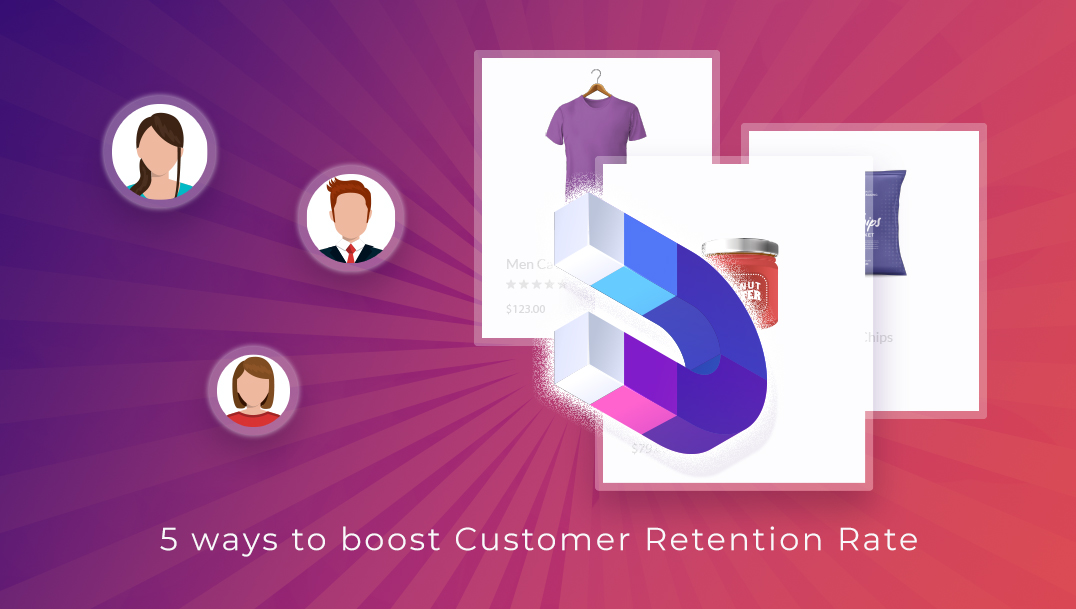Etsy is one of the most inspiring online Multivendor marketplace successes.
Their platform gives a chance to all indie, home-grown artists to connect with art lovers who believe in independent arts and want to buy such products
But, was it easy for them?
Well, no.
To be successful, Etsy has to draw both the art manufacturers, suppliers, home-grown artists (service providers) and the art connoisseurs (buyers) to their platforms.
Here comes a very old marketplace challenge known as the infamous “Chicken and Egg Problem”. To lure one stakeholder to their platform, they need another stakeholder to thrive there. Etsy founders knew this riddle and they took a smart approach.
They scoured craft fairs across the country to identify the best independent artists. They pitched them on opening up an online store on their site. Once Etsy had the first-tier artisans on the site, the next tier naturally followed them.
This is how Etsy resolved the perennial marketplace problem.
Every marketplace has stumbled upon this puzzle. The successful ones have carved out a plan to resolve the issue. Today, we will look into their solutions, their strategies.
Will they help you?
Maybe they will not give you a ready answer. We are hoping they will give you a lot of insight, help you to understand your situation, and inspire you to find the best solution for your chicken and egg problem.
What’s the marketplace Chicken and Egg problem?
“What comes first? The Chicken or the egg? “
This old proverb has a beautiful yet perplexing correlation with building an online marketplace business.
Every E-Commerce multivendor marketplace has two sets of players. The suppliers or the service providers and the buyers or the consumers.
In an online multivendor marketplace, the chicken and Egg problem occurs whenever the value proposition of these two separate groups is dependent on penetration in the other.
Put simply, if there are no service providers on the platform, the buyers will not come. And service providers will never be interested in selling their stuff on a platform where there are no buyers.
So, where will you keep your focus? The customers or the service providers?
Pretty irritating riddle. Right?
“The key to everything is patience. You get the chicken by hatching the egg, not by smashing it”
Arnold H. Glasow
And the good news is that there are a lot of strategies, and hacks available in the market practiced by successful marketplaces.
Let’s dive deep into them
Be creative in acquiring suppliers and vendors like Airbnb
What is Airbnb:- Airbnb (ABNB) is an online marketplace that connects people who want to rent out their homes with people looking for accommodations in specific locales. The company has come a long way since 2007 when its co-founders first came up with the idea to invite paying guests to sleep on an air mattress in their living room. According to Airbnb’s latest data, it now has more than 7 million listings, covering some 100,000 cities and towns in 220-plus countries and regions worldwide.
In their initial days, Airbnb founders realized that if they didn’t have a supply of houses and apartments, people are not going to visit their platform.
So, they had to figure out if there were no Airbnb, where people who need accommodation will look for rooms? The answer was Craiglist( Craigslist stylized as Craigslist) is a privately held American company operating a classified advertisements website with sections devoted to jobs, housing, for sale, items wanted, services, community service, gigs, résumés, and discussion forums.). But the Craiglist was not visually appealing and had other flaws.
Airbnb sniffed upon a chance to leverage.
The founders figured they could do a better job of making apartments appealing than the online classified sites, but first they had to siphon away its customers from the Craiglist.
They made software to hack Craiglist to extract the emails of the property owners. Then the same script sent a letter on behalf of a pretty young girl who “liked the apartment so much” and asked the owner to add his apartment to Airbnb. So Airbnb quickly acquired 60,000 first landlords, which solved the supply side. .
The strategy worked. With nothing to lose, property owners doubled their chances of finding a potential renter, agreed to list their details on a much better website, and voila! Airbnb had a ready supply of homes with which it could attract customers.
Takeaway: There are opportunities, places to reach out to the service providers and draw them to your platforms. All you need is a little creativity and commitment to help them.
Airbnb found a ready supply side at Craiglist. Where is yours?
Ensure excellent service like Uber:
Uber had three cool strategies to resolve the chicken and egg problem….
- They focused on the supply side, the cab drivers.
- They focused on providing quality supply side.
- They tempted the passengers with the free rides.
In their initial days, they cold-called professional taxi drivers and offered to pay them an hourly rate who tried out their new platform. This is how, Uber got their first lot of service providers who were professional, capable of providing great service better than random, rookie cab drivers.
Also, to incentivize passengers, they offered free rides at local events in the tech-savvy San Francisco community and worked hard to make each experience the best ever can experience for them.
When they launched in a new city, they didn’t have 100s of people requesting rides on Day 1 but a few, but they paid drives $30/hr just to be online even if Uber wasn’t busy just so the riders could see the cars on the roads 24/7.
The relentless focus on providing quality services to increase customer retention has been Uber’s tipping point en route to massive success.
Takeaway: Don’t just get the supply side first but make it the best suppliers. Good services keep customers happy who will willingly do the marketing for you drawing more and more customers to you.
Build a community to get 15,000 first users like Tinder:
The dating app Tinder is another inspiration to bring two stakeholders in one place.
They had a unique problem. To make it successful, they need both men and women interested and active on their platform.
Interesting? More interesting how their founders resolved it.
- Whitney Wolfe, Co-Founder of Tinder, visited women’s communities, motivating them to register in the app, explaining how it’s cool and useful.
- She did not stop there and gave presentations to male communities, showing the app that is full of those local girls, who already registered.
- When Whitney returned from a trip, 15,000 first users have already used the application.
She would make sure her attendees are installing the app after her solid presentations. Rest is as they say history.
Takeaway: Tinder resolved the chicken and egg marketplace puzzle by reaching out to both the stakeholders, men and, women. They put all their efforts into making sure they install the app, give it a try to resolve the supply-demand puzzle.
Find an enterprise client :
Want to kick off your marketplace journey with a bang? Find an enterprise client. The big-name, the massive brand value will work wonders for you.
Instead of creating a large supply side with a bagful of small vendors, you can make twice an effect if you can rope in a big client.
Gigs marketplace Upwork has made it possible
Enterprise clients often have lots of money to spend on the demand side. single contract can get you off the ground and running and focusing all your efforts on building the supply side and more product.
Quora did walk on the same path too.
When Adam D’Angelo & co. started, they invited the top brass to ask and answer on Quora.
In the beginning, it was an invite-only site and hence only a chosen few got the opportunity to check out this website. These few were some pretty successful people in silicon valley (mainly the friends and friends of friends of founders). Their popularity and their exclusive voices rendered on Quora made this Q&A platform successful, mostly through word of mouth.
Takeaway: Enterprise clients are bliss for any marketplace. They take away the pain of generating multiple service providers or multiple buyers for a marketplace platform. Their strong connection and great reputation will bring you into the limelight without much effort. The question is will you be able to fish one for your marketplace?
Be the single-player like Amazon
Amazon has played this card with such elan that it has become a popular model among new marketplaces.
Amazon was a successful e-commerce book retailer before becoming a successful multivendor marketplace for everything. Jeff started with reselling books buying them from other bookstores and retailers. This allowed Jeff to create value for buyers without having any sellers participate in the marketplace directly.
Once Jeff had a strong consumer base, he allowed other sellers to participate in the marketplace directly by listing their products and setting prices themselves.
Indian marketplace giant Flipkart has treaded on a familiar path and earned success.
OpenTable also kicked off with the single-player strategy and acquired restaurants (supply) before it had dinner requests (demand).
Takeaway: This is a proven solution. You can capture the market in your initial days, be a single point of sale for your customers, create a strong buyer base and lure other vendors later to join your platform.
Promise to find buyers for your suppliers:
This is a pious vendor marketplace strategy executed supremely by Groupon.
Groupon approached merchants and asked if they would be willing to sell a gift card at a discount as a way to attract new customers. The service was free and Groupon only took a cut of the sales, which limited the risk to the supplier.
Now, when Groupon started showcasing tantalizing deals, customers flocked to their website giving thumbs up to their strategy.
Early Groupon employee Shawn Bercuson is saying :
” Many of the merchants expected that we were trying to get them to pay for something upfront, so when we said we only took a percentage of what we were able to sell and they’d never have to pay us out of pocket, they were pleasantly surprised. “
Takeaway: Like Groupon, you too can focus on existing vendors, pitch, and show them your site’s extra advantages. More exciting your perks are for them, the better are chances for you to resolve the chicken and egg problem for your marketplace.
Create a super niche and leverage that like Quora
Let’s go back to Quora example again.
By now, you must have known that when Quora kicked off, they invited all the big names of the tech field to participate in the platform.
Even Mark Zuckerberg joined the site and asked a few questions.
Since all these amazing people were asking questions and writing answers here, Quora got publicized through word of mouth and more intelligent people joined in.
Quora caught the fancy of many youngsters, especially in computer science, startups, and entrepreneurship, because they could get their questions answered by the specialists, that too for free.
No wonder, Quora quickly attained all the fame it was looking for and now the questions and answers are beyond just technology or startup.
Takeaway: If you are struggling to break the chicken and egg puzzle, focus on creating a community or catering to a specific audience. Successful example- Dribble, Github.
Endnote:
Online Marketplace business is a challenging task. But some creative forces, the band of entrepreneurs, and marketplace heroes have proved things can work if the first hurdle is crossed with success.
As we can see, people have gone the length to find a solution. They have tried the offline approach, built a community, given freebies, some even poached their supply side.
We are wondering about you. What about you? Are you finding the stories we have shared here inspiring and useful? We would love to know your strategy to resolve the chicken and egg issue.


